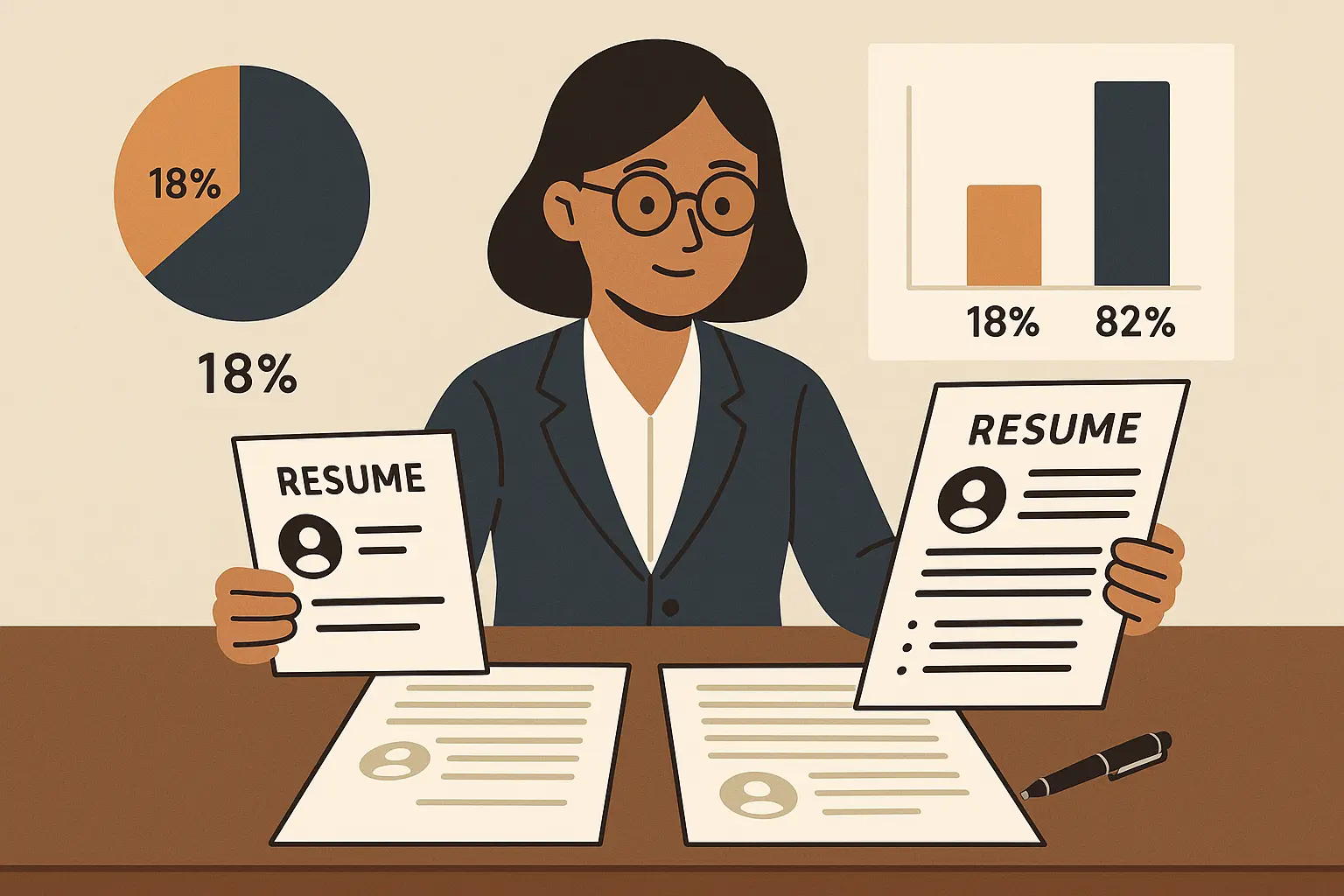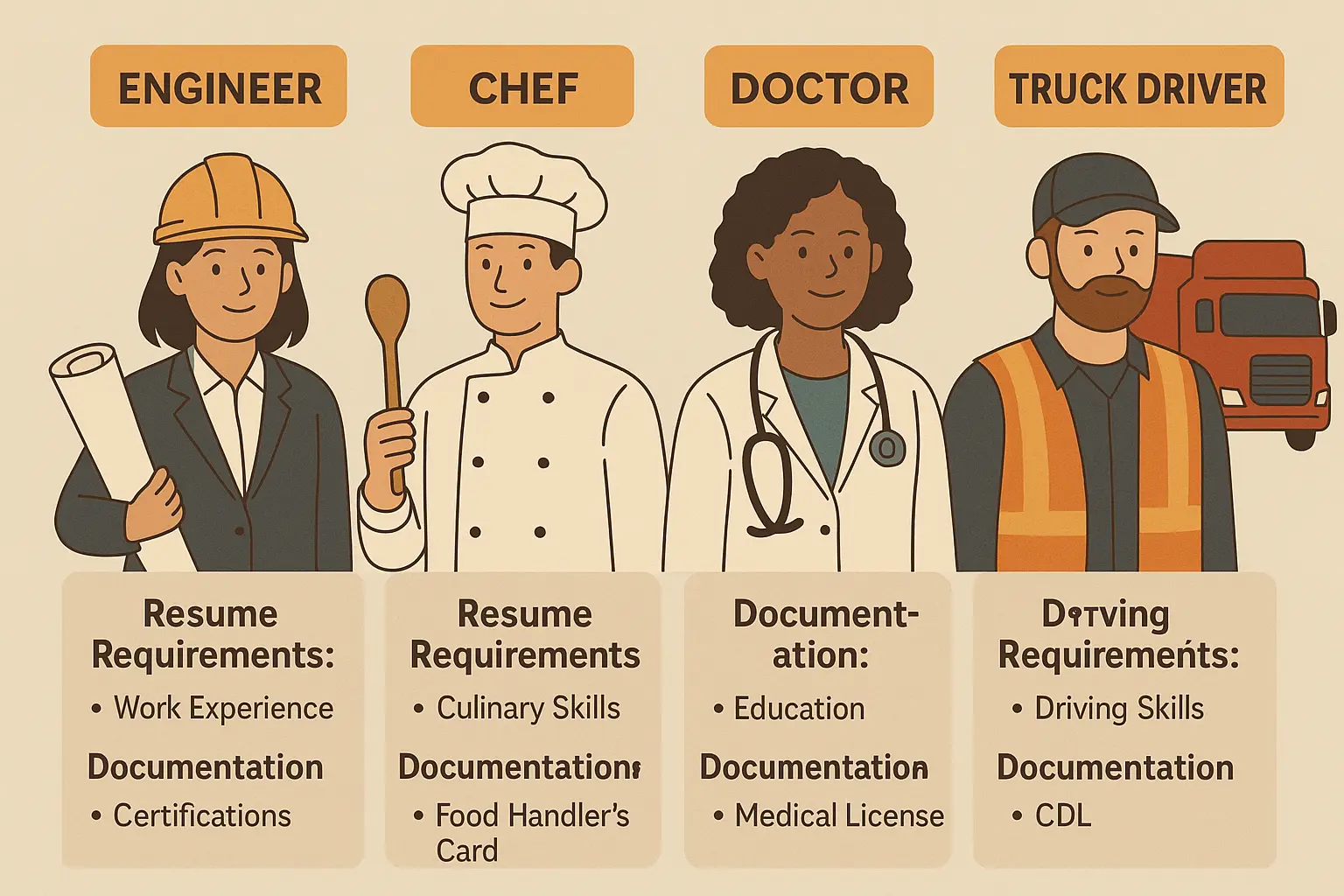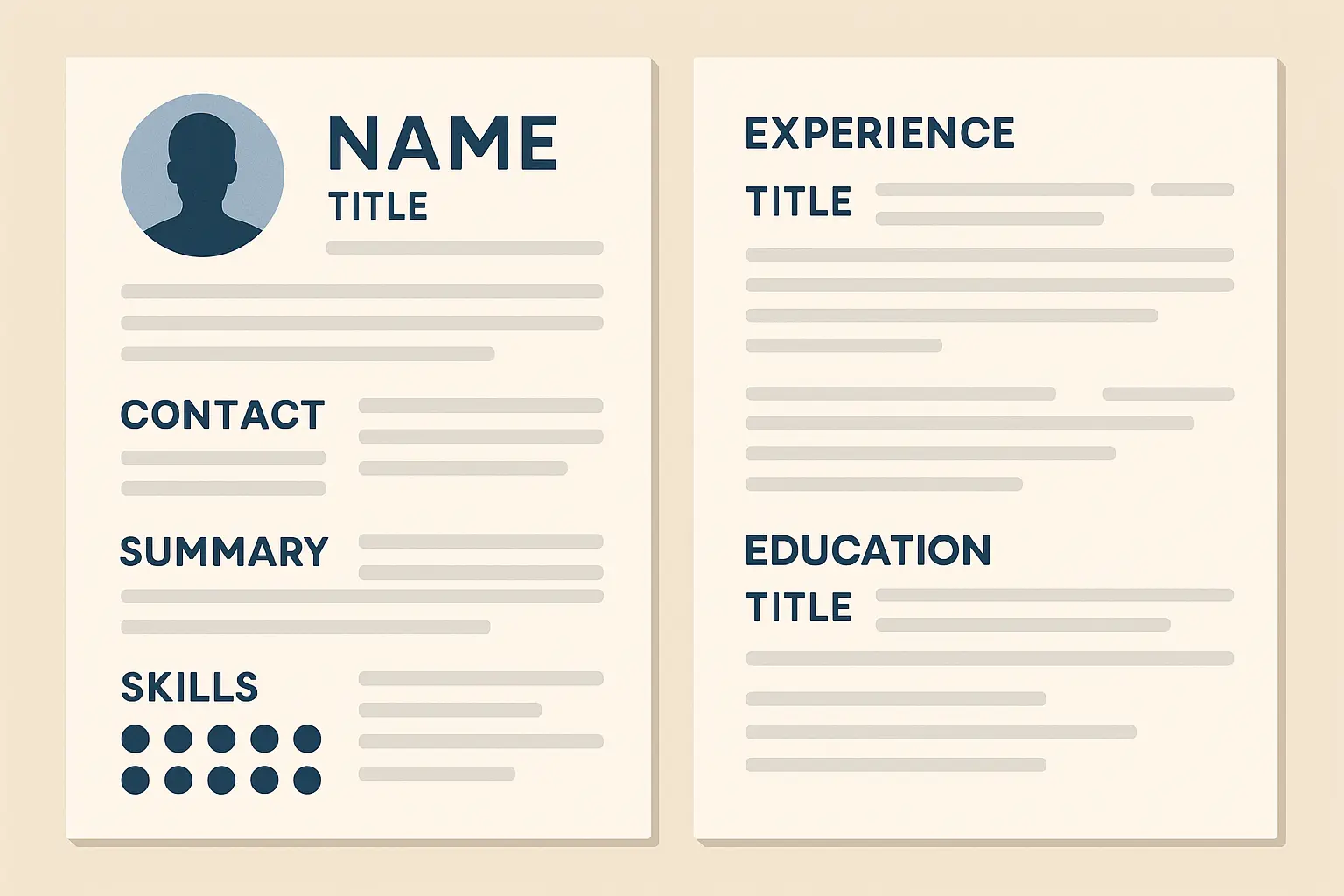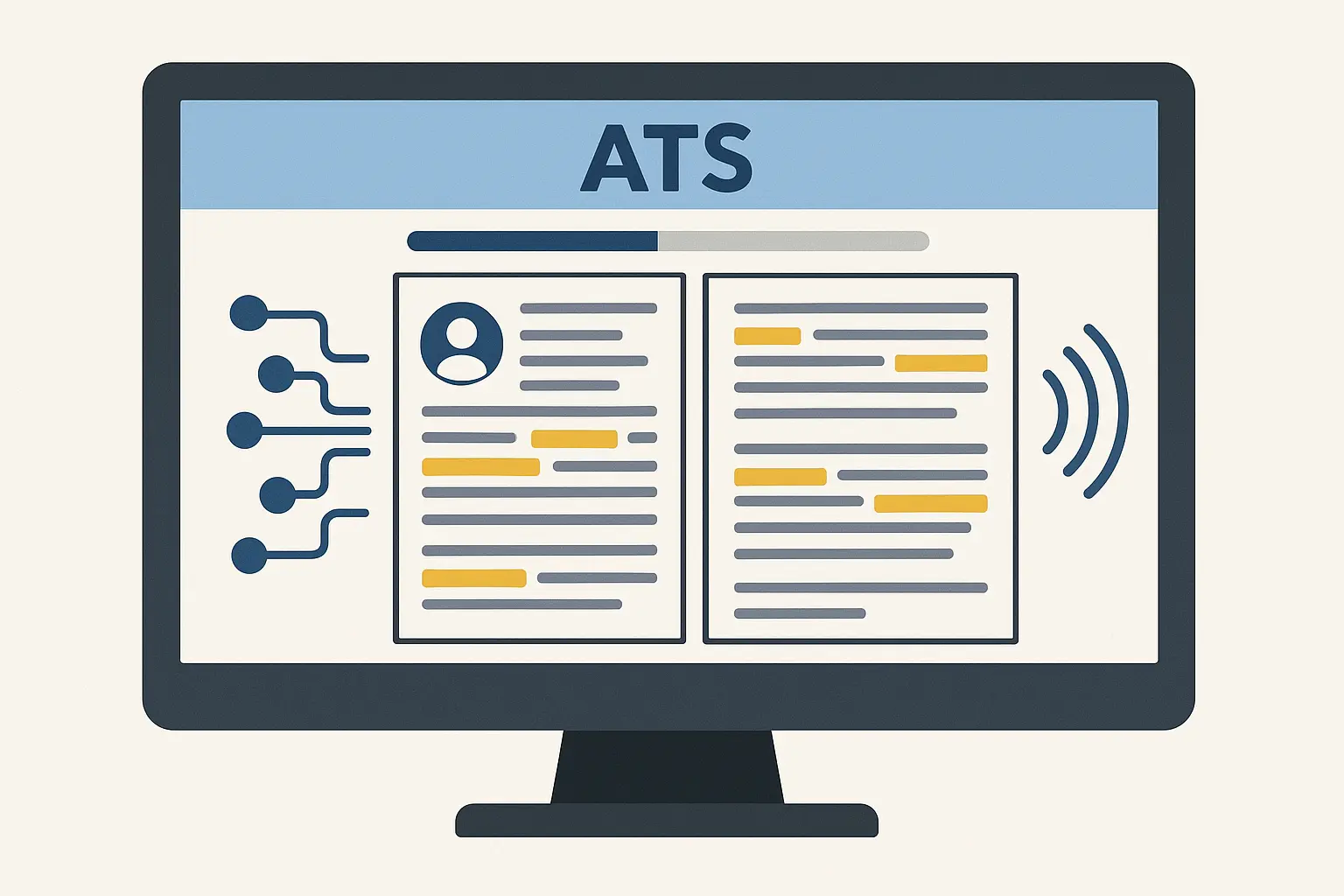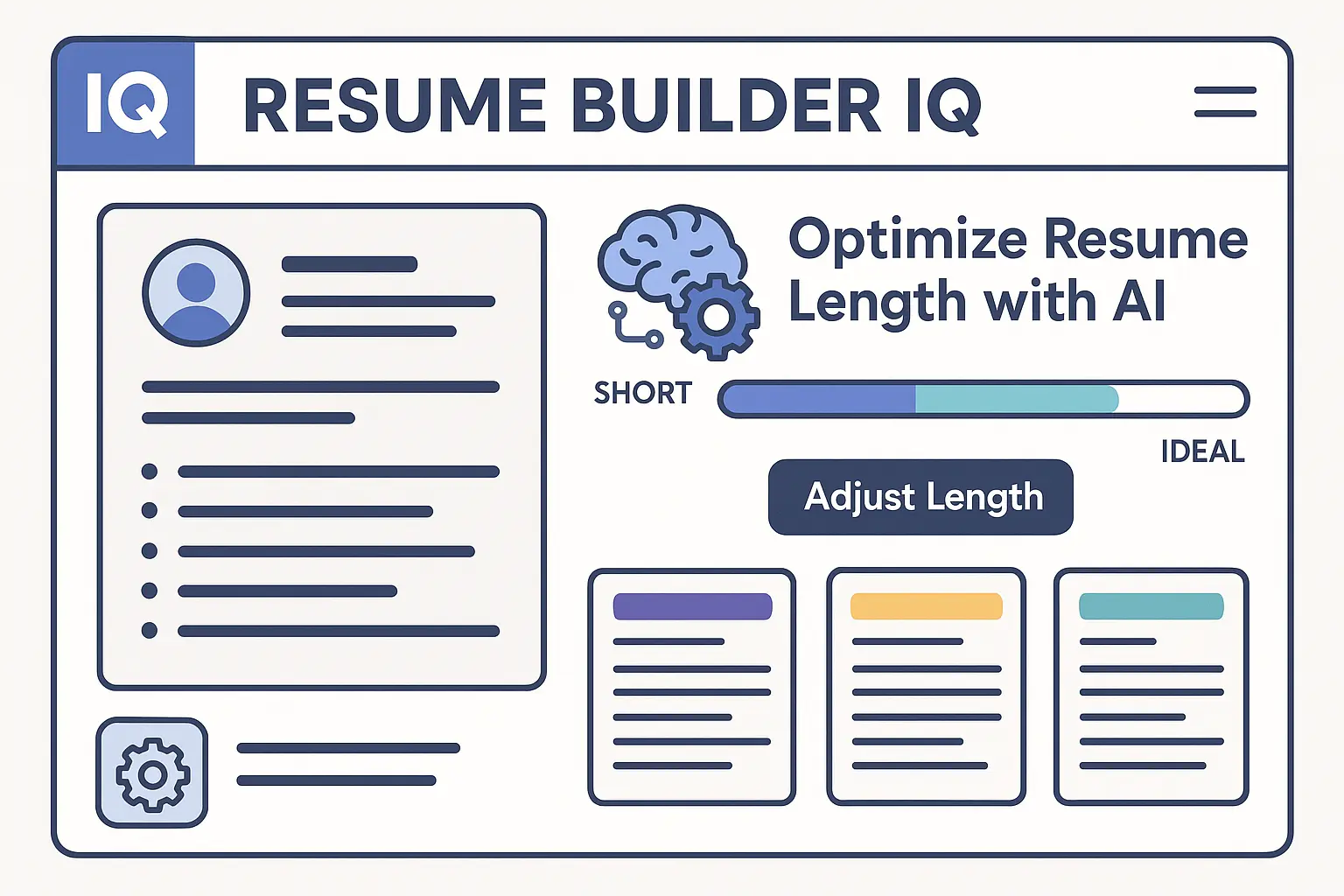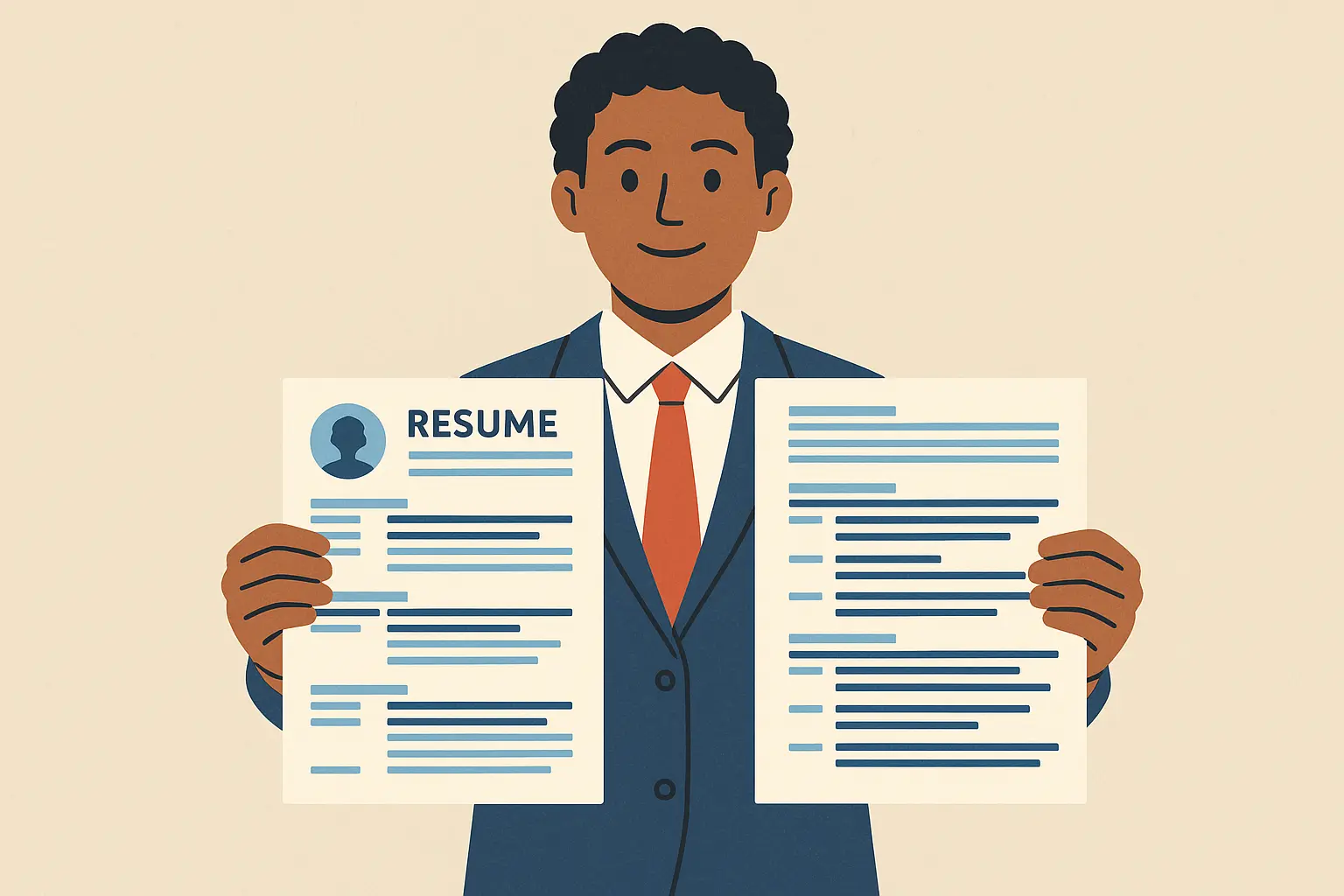Can a Resume Be 2 Pages? The Truth About Resume Length That Nobody Tells You

Let me guess – someone told you to keep your resume to one page, right? Maybe it was a career counselor, your college advisor, or that well-meaning friend who “knows about hiring.”
Well, I’ve got news for you: that advice might be costing you job opportunities. One of the biggest questions job seekers ask is, can a resume be 2 pages, and the answer might surprise you.
A recent study of nearly 500 hiring professionals found something surprising – recruiters actually prefer two-page resumes 2.3 times more than one-page ones. Yeah, you read that right. This finding from ResumeGo completely flips the conventional wisdom that has dominated career advice for decades.
Table of Contents
- Why the One-Page Resume Rule is Dead
- When Two Pages Actually Helps Your Career
- Industry Standards You Need to Know
- Strategic Content Distribution Across Pages
- Technical Considerations for Multi-Page Resumes
- Common Mistakes That Kill Two-Page Resumes
- How Resume Builder IQ Optimizes Your Resume Length
- Final Thoughts
Quick Answer
So, can a resume be 2 pages? Absolutely. If you have 5+ years of experience or work in tech, healthcare, academia, or government, two pages might actually help you get more interviews. Just make sure every word counts.
Why the One-Page Resume Rule is Dead
Here’s the thing nobody tells you: the one-page rule came from an era when resumes were physically mailed, photocopied, and stuffed into filing cabinets. Paper costs mattered. Storage space was limited.
Those constraints? They don’t exist anymore. That’s why when people ask, can a resume be 2 pages, the modern answer is yes—because digital hiring no longer has space limitations
The Real Story Behind This Outdated Advice
Digital hiring has completely changed the game. Recruiters aren’t flipping through paper stacks anymore – they’re scanning screens, searching keywords, and diving deep into candidates who catch their attention. The average recruiter spends 7.4 seconds on initial screening, but here’s the kicker: they invest 2-3 minutes reviewing promising candidates.
That’s where comprehensive information becomes your secret weapon.
Modern recruitment processes actually favor thorough information over artificial brevity. Research shows that 78% of recruiters prefer resumes that fully demonstrate qualifications rather than condensed versions that sacrifice important achievements.
Understanding these modern recruitment processes is crucial, especially when considering ATS-friendly resume formatting that works effectively across multiple pages.
What Hiring Managers Actually Think
I’ve talked to countless recruiters, and their feedback might surprise you. Most are genuinely frustrated with artificially condensed resumes that omit crucial achievements just to fit some arbitrary page limit. They want to see your full story, especially for senior-level positions where experience depth matters more than space constraints.
Get this: the ResumeGo study found that hiring managers actually spent more time reviewing longer resumes. We’re talking 2 minutes 24 seconds on one-page resumes versus 4 minutes 5 seconds on two-page resumes. That extended review time? It means comprehensive information actually helps the evaluation process rather than hurting it.
When Two Pages Actually Helps Your Career
Two-page resumes become your advantage when you have substantial experience, specialized skills, or significant achievements that need proper context. If you’ve got the goods to fill two pages meaningfully, you should absolutely use that space.
You might still wonder, can a resume be 2 pages if you’re mid or senior-level? The reality is that in many cases, it should be.
Senior Professionals: You’ve Earned the Right to Tell Your Story
If you’ve got 10+ years under your belt, cramming your career into one page is doing yourself a major disservice. You’ve likely held multiple leadership roles, managed significant budgets, led major initiatives, and delivered measurable results that deserve proper explanation.
Think about it: would you rather see a senior marketing director’s resume that mentions “increased revenue” or one that explains “spearheaded digital transformation initiative resulting in 34% revenue growth ($2.3M increase) across three product lines over 18 months”?
The context matters, and context takes space.
Let me tell you about Sarah, a Senior Operations Director with 12 years of experience. Her one-page resume simply listed “Managed operations team and improved efficiency.” Pretty generic, right? Her expanded two-page version detailed: “Led cross-functional team of 25 professionals across 3 departments, implementing lean manufacturing processes that reduced production costs by 18% ($1.2M annual savings) while improving quality metrics by 23% and reducing customer complaints by 40%.”
Night and day difference.
Senior professionals should also consider professional resume formatting strategies that effectively showcase leadership experience across multiple pages.
Mid-Career Professionals: You’re in the Sweet Spot
You’re in that interesting space between junior and senior levels – maybe 5-10 years of experience with specialized skills that set you apart. Your challenge isn’t just showing what you’ve done; it’s demonstrating the depth of your expertise across multiple areas.
This is especially true if you’ve worked across different industries or taken on varied responsibilities within your field. Each experience adds value to your candidacy, but only if you can present it with enough detail to show relevance and impact.
| Career Stage | Recommended Resume Length | Key Focus Areas |
|---|---|---|
| Just starting out (0-2 years) | 1 page | Education, internships, relevant coursework, transferable skills |
| Getting somewhere (3-8 years) | 1-2 pages | Career progression, key achievements, specialized skills, certifications |
| Running things (8-15 years) | 2 pages | Leadership experience, strategic initiatives, quantifiable results, team management |
| Executive level (15+ years) | 2-3 pages | Executive leadership, organizational transformation, board experience, industry recognition |
Industry Standards You Need to Know
Here’s the thing about different industries – they each have their own expectations, and some of them throw the one-page rule right out the window. If you’ve ever asked yourself, can a resume be 2 pages in academia, tech, or government, the answer is not only yes—it’s often expected.
Academia: Trying to Fit a Novel Into a Tweet
If you’re in academia, trying to squeeze your publications, research, and teaching experience onto one page is like trying to fit a novel into a tweet. It’s not happening, and it shouldn’t.
Universities and research organizations want to see your publications, research grants, conference presentations, teaching experience, and academic achievements. They’re evaluating your potential contributions to their research community and academic reputation. That takes space to document properly.
Healthcare and Tech: The Details Matter
Healthcare and tech folks face the same challenge. Your certifications, licenses, technical skills, and complex projects need room to breathe. A hiring manager wants to see that you “architected microservices infrastructure supporting 2M+ daily users, reducing system latency by 40% while improving scalability across 15 integrated applications,” not just that you “managed development projects.”
These fields prioritize competency verification over resume brevity. The details are what separate you from the competition.
Technical professionals should understand how to showcase technical skills effectively when distributing content across two pages.
Government Jobs: They Want ALL the Details
Federal applications and security clearance positions operate under completely different rules. They need comprehensive work history, detailed education information, and extensive background documentation. The government isn’t concerned with your ability to be concise – they’re evaluating your qualifications against specific criteria.
But here’s something interesting: starting September 27, 2025, the Office of Personnel Management is implementing a “two-page resume requirement for federal jobs” Federal Agent. This is a huge shift from the traditionally lengthy federal resume format, showing that even the government recognizes that comprehensive information can be effectively presented within two pages when strategically organized.
Government job seekers can benefit from specialized federal resume templates designed to meet the new two-page requirements while maintaining comprehensive coverage.
Strategic Content Distribution Across Pages
Think of your resume like a movie trailer. Page one is your highlight reel – the best scenes that make people want to see the full movie. Page two is the supporting cast and backstory that proves page one wasn’t a fluke.
Page One: Your Highlight Reel
Your first page carries enormous responsibility – it determines whether recruiters continue to page two or move on to the next candidate. The top third of page one should contain your most compelling professional summary, contact information, and standout achievements that immediately establish why you’re worth their time.
Don’t treat page one as just the beginning of your story; treat it as a complete argument for why you deserve consideration. Include your strongest accomplishments, most relevant experience, and key skills that align with your target role.
Here’s a trick: End page one with something like “Additional leadership experience and technical certifications on page 2.” It’s like a cliffhanger that keeps them reading.
Crafting compelling page one content often starts with an effective resume summary that immediately captures attention and sets the stage for the detailed information on page two.
Page Two: The Supporting Evidence
Page two isn’t overflow space for information that didn’t fit on page one. It’s strategic real estate for supporting details that reinforce your candidacy. Use it for earlier career positions that show progression, additional projects that demonstrate versatility, volunteer work that reveals character, or comprehensive skills that showcase technical depth.
The content on page two should feel intentional and valuable. Every section should serve a purpose in your overall narrative. If you’re including something just to fill space, remove it. If you’re including it because it strengthens your candidacy in ways that page one couldn’t accommodate, you’re on the right track.
| Page Section | Page 1 Priority Content | Page 2 Supporting Content |
|---|---|---|
| Header | Contact info, LinkedIn, professional title | Name and page number only |
| Summary | Compelling 3-4 line value proposition | Not needed |
| Experience | Most recent 2-3 positions with key achievements | Earlier positions showing progression |
| Skills | Core competencies matching job requirements | Technical certifications, additional skills |
| Education | Relevant degrees and major certifications | Additional training, coursework details |
| Additional | Industry awards, key projects | Volunteer work, publications, references |
Technical Considerations for Multi-Page Resumes
Don’t worry – the technical stuff is actually pretty simple. But getting it wrong can torpedo an otherwise great resume.
ATS Systems: They’re Smarter Than You Think
Applicant tracking systems have evolved significantly, and most modern ATS platforms handle two-page resumes just fine. The key is understanding how to format them properly.
Save your resume as a PDF – it keeps everything looking clean across different systems. Most modern ATS can read PDFs just fine, and PDF format maintains your intended layout better than Word documents that might reflow unpredictably.
Research shows that today, over 98.4% of Fortune 500 companies use applicant tracking systems for hiring, making ATS optimization crucial for resume success regardless of length.
Keep Headers Simple and Keywords Spread Out
Put your name and “Page 2” at the top of the second page. That’s it. Don’t get fancy with complex headers that might confuse ATS parsing.
Here’s something important: spread your keywords naturally across both pages. Don’t stuff them all on page one like you’re gaming Google. According to Jobscan’s research, 76.4% of recruiters filter candidates by skills, 59.7% by education, 55.3% by job title, and 44% by years of experience, making strategic keyword placement across both pages essential for passing initial ATS screening.
Common Mistakes That Kill Two-Page Resumes
I’ve seen some train wreck resumes in my time. Here are the biggest mistakes that’ll tank your chances:
Padding Just to Fill Space
The worst two-page resumes are one-page resumes with filler content added to reach two pages. If you’re adding your high school job from 15 years ago just to reach page two, stop. Just stop.
Every line should serve a specific purpose in demonstrating your qualifications for your target role. If you can’t justify why something belongs on your resume, it doesn’t belong there.
Splitting Job Descriptions Across Pages
Nothing screams “amateur” like having half your current job on page one and half on page two. Plan your content distribution carefully to ensure related information stays together. If a job description won’t fit completely on one page, move the entire section to the next page rather than splitting it.
Inconsistent Formatting Between Pages
If page one looks professional and page two looks like your printer ran out of ink, you’ve got problems. Your fonts, spacing, margins, and design elements should remain consistent across both pages.
The federal government’s new resume requirements emphasize this point perfectly. According to “two-page federal resume implementation guidance” ClearanceJobs, agencies are providing specific formatting requirements including “a .5 margin all around (nothing smaller) and 11-point font (again, nothing smaller) unless the job posting specifies otherwise.”
Let me tell you about Michael’s resume disaster. He split his current job description across pages, leaving his key achievement (“Led $2.4M cost reduction initiative”) buried at the top of page two where many recruiters missed it. After reformatting, he moved his entire current position to page one and used page two for earlier roles and supporting information. Result? Three interview requests within two weeks.
How Resume Builder IQ Optimizes Your Resume Length
Because figuring out resume length shouldn’t feel like solving calculus.
Resume Builder IQ takes the guesswork out of resume length decisions by analyzing your specific situation against industry benchmarks and job requirements. Our AI looks at your experience, industry, and target jobs, then tells you straight up: “You need two pages” or “Keep it to one.”
Our platform recognizes when your experience level and career achievements warrant a two-page format, helping you avoid both the trap of cramming valuable information into insufficient space and the mistake of adding unnecessary filler content.
Our ATS-optimized templates are specifically designed for multi-page resumes, ensuring proper formatting, strategic keyword distribution, and seamless page flow that maintains recruiter engagement. The AI writer helps you craft compelling page transitions and optimize content hierarchy, while our expert-designed templates handle the technical aspects that often cause formatting nightmares.
Whether you’re a senior executive needing space for leadership achievements or a technical professional with extensive certifications, Resume Builder IQ provides the tools and intelligence to create a perfectly balanced resume that maximizes your interview potential.
Resume Length Decision Checklist:
- Do you have 5+ years of relevant experience?
- Can you fill 1.5+ pages with meaningful, job-relevant content?
- Does your industry typically expect comprehensive documentation?
- Do you have specialized skills, certifications, or achievements that need explanation?
- Would condensing to one page require omitting important accomplishments?
- Can you create a compelling page one that stands alone while leading to page two?
- Is your content free of redundancy and filler material?
Final Thoughts
Your resume should be as long as your story needs to be told well. Not shorter because of some outdated rule. Not longer because you think more is better.
The question isn’t whether your resume can be two pages – it’s whether your career story deserves the space to be told properly. We’ve moved far beyond the outdated constraints that created the one-page rule, and modern hiring practices actually favor comprehensive information over artificial brevity.
Most people with real experience need two pages. That’s not a failure – it’s success that requires space to showcase properly.
Your resume length should reflect your career stage, industry expectations, and the depth of value you bring to potential employers. Senior professionals with extensive achievements, mid-career specialists with diverse skills, and professionals in fields such as academia, healthcare, and technology often find that two pages allow them to present their qualifications more effectively than cramming everything into insufficient space.
Strategic content distribution hooks readers on page one while using page two to reinforce and expand your value proposition. Every line should serve a purpose, whether you’re creating a concise one-page format or a comprehensive two-page presentation. Focus on quality content, proper formatting, and ATS compatibility rather than arbitrary length restrictions that may actually hurt your chances of landing interviews.
Stop cramming your career into arbitrary limits. Tell your story the right way, and let the interviews follow.
Remember, that ResumeGo research showing recruiters prefer two-page resumes wasn’t just about length – it was about the comprehensive story those extra pages allowed candidates to tell. So, the next time you’re asking, can a resume be 2 pages, remember that length is less important than telling your story effectively.

